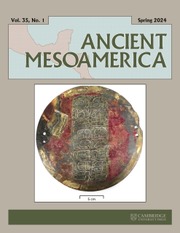Article contents
FULL PHONETIC COMPLEMENTATION, SEMANTIC CLASSIFIERS, AND SEMANTICDETERMINATIVES IN ANCIENT MAYAN HIEROGLYPHIC WRITING
Published online by Cambridge University Press: 20 November 2008
Abstract
This paper discusses a little understood spelling practice of Mayan hieroglyphicwriting, the use of full phonetic complementation of logograms, and someimplications derived from this practice, particularly when compared with similarpractices in other logosyllabic scripts from around the world (e.g., Egyptianand Luvian), which suggest that such practice existed in association withsemantic classifiers. Also, a preliminary distinction between two types ofsemantograms is made: semantic classifiers and semantic determinatives. Previousdiscussions of both types of signs are reviewed, and it is proposed that the twoare more widespread and important in Mayan writing than previously thought. Theimplications of these results are clear: Mayanists, particularly epigraphers,need to pay more attention to this distinction in their decipherment efforts, aswell as in any future philological and paleographic endeavors. The paperconcludes with a proposal for the interrelationship between the stylisticevolution of graphemes and the development of semantic classifiers anddeterminatives.
Information
- Type
- Research Article
- Information
- Copyright
- Copyright © Cambridge University Press 2008
References
REFERENCES
- 12
- Cited by

